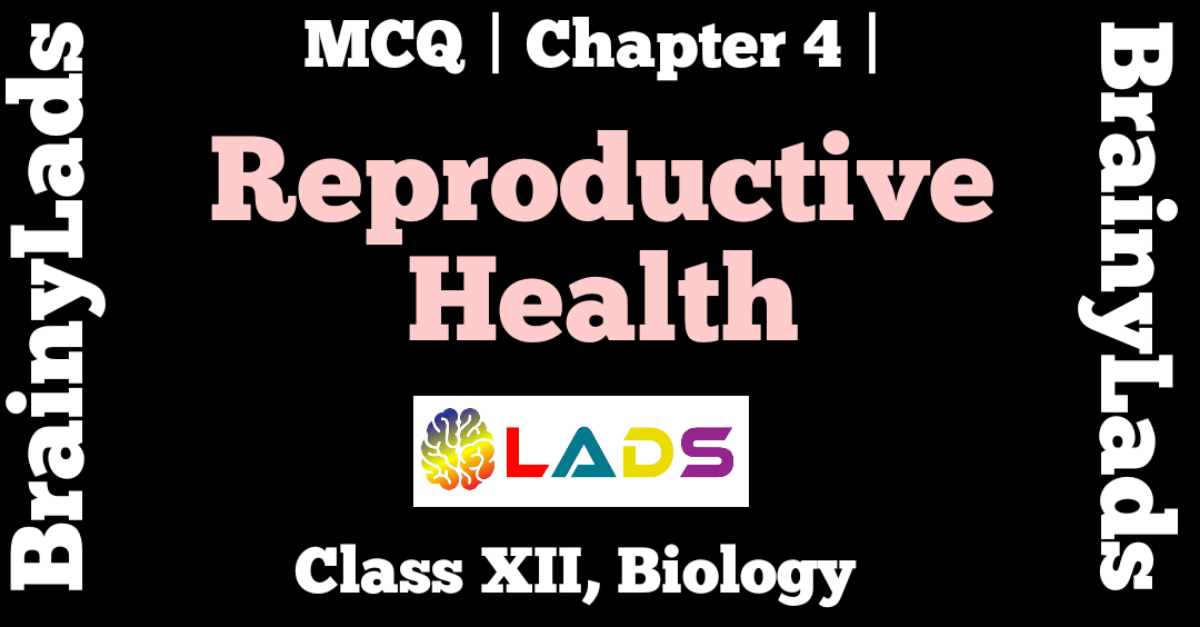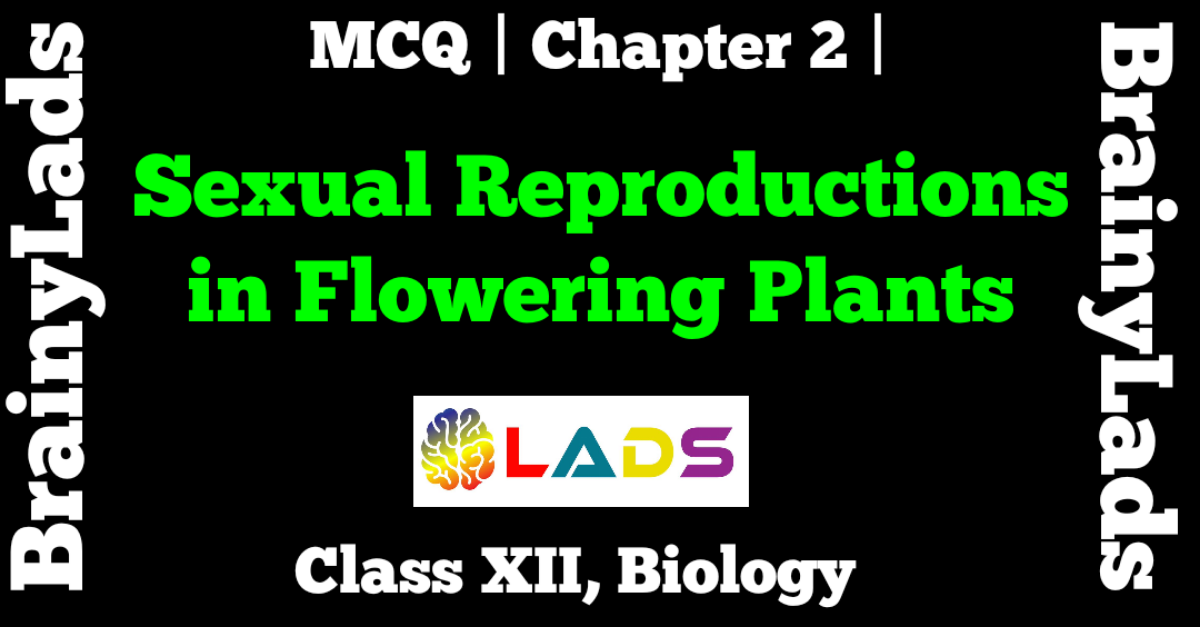MCQ of Reproduction in Organisms | Chapter 1 | Biology | Class 12 |
MCQ of Reproduction in Organisms
Question 1: The period from birth to the natural death of an organism signifies
- Reproductive phase
- Life cycle
- Life span
- Life style
Answer : C (Life span)
Question 2: No individual is immortal exclude
- Single celled organisms
- Green plant
- Sponges
- Drones
Answer : A (Single celled organisms)
Question 3: Clone is the product of
- Sexual reproduction
- Sexual or asexual reproduction
- Amphimixis
- Asexual reproduction
Answer : D (Asexual Reproduction)
Question 4. In monerans and protists , sexual reproduction takes place by
- Budding
- Multiple fission
- Binary fission
- Amphimixis
Answer : C (Binary fission)
Question 5. In animal and other simple organism uniparental reproduction is called_______ reproduction in plant called________ reproduction
- Vegetative , asexual
- Asexual , vegetative
- Parthenogenetic , amphimictic
- Amphimictic , apomictic
Answer : B (Asexual , vegetative)
Question 6: Which one of the following is not vegetative propagule?
- Rhizome and sucker
- Tuber and offset
- Bulbil , leaf buds , bulb
- Antherozoid
Answer : D (Antherozoid)
Question 7: Which of the following regulate the reproductive processes and the associated behavioural expression of the organisms?
- Hormones
- Environmental factors
- Abiotic components
- Interaction between hormones and the environmental factors
Answer : D (Interaction between hormones and the environmental factors)
Question 8: Oestrus cycle is seen in
- Crows and sheep
- Rats and deers
- Dogs and tiger
- All of these
Answer : D (All of these)
Question 9: Birds in captivity can be made to lay eggs throughout the year in this case laying eggs is
- Related to reproduction and commercial exploitation for human welfare
- Neither related to reproduction nor a commercial exploitation for human welfare
- Not related to reproduction but a commercial exploitation for human welfare
- Related to reproduction but not a commercial exploitation for human welfare
Answer : C (Not related to reproduction but a commercial exploitation for human welfare)
Question 10: Which of the following plant exhibit unusual flowering phenomena?
- Mango and litchi
- Mango and maize
- Litchi and pea
- Bamboo species and strobilanthus species
Answer : D (Bamboo species and strobilanthus species)
You may also read MCQ of Sexual Reproduction in Flowering Plants, MCQ of Human Reproduction, MCQ of Reproductive Health, MCQ Of Principles of Inheritance and Variation, MCQ of Molecular Basis of Inheritance for better understanding of the chapters.
Question 11. Which of the following plant do not show clear vegetative , reproductive and senescent phase ?
- Perennial plant
- Annual plant
- Biennial plant
- Either B or C
Answer : A (Perennial plant)
Question 12: Some organisms are capable of sexual and asexual reproduction under favourable condition reproduction proceeds sexually when condition become more stressful reproduction switches to sexual mode why
- Sexual mode is simple and more rapid line large number of fostering to be produced
- Sexual reproduction requires two separate individuals who can mutually provide nutrient support during stress
- Sexual reproduction produce individuals with new combination of recombined chromosome increase diversity
- Asexual reproduction requires more energy
Answer : C (Sexual reproduction produce individuals with new combination of recombined chromosome increase diversity)
Question 13: The fastest method to obtain clones is through
- Induced mutation
- Para sexual hybridization
- Parthenogenesis
- Vegetative reproduction
Answer : D (Vegetative reproduction)
Question 14: Internal fertilization occurs in
- Many fungi
- Reptiles and mammals
- Bryophytes, pteridophytes gymnosperms and angiosperms
- All of these
Answer : D (All of these)
Question 15: In Heterogamous organism the male gamates and female gametes are called respectively
- Spermatogonia , oogonia
- Spermatid , ootid
- Sperm , ovum
- Sperm and oospore
Answer : C (Sperm , ovum )
Question 16: In which of the following water is essential for fertilization
- Algae
- Bryophytes
- Pteridophytes
- All of these
Answer : D (All of these)
Question 17: In majority of organisms male gamete is _____ and female gamete is______
- Motile , motile
- Non – motile , non – motile
- Non – motile , motile
- Motile , non motile
Answer : D (Motile , non – motile)
Question 18: Offspring of oviparous animals are at a greater risk as compared to offspring of various animals because
- Proper embryonic care and protection is lesser
- Embryo is not developed
- Progenies are with more variation
- Progenies are larger
Answer : A (Proper embryonic care and protection is lesser)
Question 19: Which of the following statement is true about water hyacinth?
- It gives product to be used in medicine
- It is a marine plant
- It take oxygen from water which causes death of fishes
- It is being cultivated in seawater for biogas
Answer : C (It take oxygen from water which causes death of fishes)
Question 20: Monoecious plant of chara shows occurrence of
- Stamen and carpel on the same plant
- Upper antheridium and lower oogonium on the same plants
- Upper oogonium and lower antheridium on the same plant
- Antheridiophore and Archegoniophore on same plant
Answer : C (Upper oogonium and lower antheridium on the same plant)
Question 21: Zoospores are
- Motile gametes of chlamydomonas
- Non motile gametes of sponges
- Motile gametes of hydra
- Non motile gametes of penicillium
Answer : A (Motile gamates of Chlamydomonas)
Question 22: Asexual reproductive structures found in Penicillium are
- Conidia
- Buds
- Gemmules
- Zoospore
Answer : A (Conidia)
Question 23: Which of the following pairs is not correctly match?
Mode of reproduction Example
- Offset Water Hyacinth
- Rhizome Banana
- Binary fission Sargassum
- Conidia Penicillium
Answer : C (Binary fission Sargassum)
Question 24: Gemmule formation is a common mode of reproduction in
- Hydra
- Sponge
- Penicillium
- Amoeba
Answer : B (Sponge)
Question 25: Strobilanthus kunthiana is also called
- Neela kuranji
- Peela kuranji
- Hara kuranji
- Kala kuranji
Answer : A (Neela kuranji)
Question 26: Oestrus cycle is cyclic change in the activities of ovaries and accessory duct in non primates during
- Reproductive period
- Maturation period
- Ageing period
- Juvenile period
Answer : A (Reproductive period)
Question 27: Those organisms which reproduce throughout the year are commonly known as ____ breeders; eg.____ which those which displays reoccurring sexual activity are called_____ breeders; eg._____
- Continuous , sparrow , seasonal , hen
- Seasonal , lizard , continuous , hen
- Continuous , lizard , seasonal , tiger
- Seasonal , lizard , continuous , tiger
Answer : A (Continuous , sparrow , seasonal , hen)
Question 28: Name the type of gametes found in algae
- Homogamates
- Heterogamates
- Anisogametes
- All of these
Answer : D (All of these)
Question 29: Under a heterogametic condition male gamete is commonly known as
- Antherozoid
- Sperm
- Egg
- Both A and B
Answer : D (Both A and B)
Question 30: The condition wherein male and female parts are present on variable plants is called
- Heterothallic
- Dioecious
- Unisexual
- All of these
Answer : D (All of these)
Question 31: The condition wherein both male and female reproductive organs are found on the identical plant is called
- Unisexual
- Bisexual
- Monoecious
- Both B and C
Answer : D (Both B and C)
Question 32: Which one of the succeeding is hermaphrodite?
- Ant
- Aphids
- Earthworm
- Cockroach
Answer : C (Earthworm)
Question 33: Which of the following statement regarding pollination is accurate ?
- Mostly occur in dioecious plants
- Facilitates Pollen transfer to stigma
- Both A and B
- None of the above
Answer : C ( Both A and B)
Question 34: Parthenogenesis is the process wherein new organism is formed
- With fertilization
- Without fertilization
- Through mitosis
- Through meiosis
Answer : B (Without fertilisation)
Question 35: Why does organisms demonstrating external fertilization liberates a high number of gametes ?
- This is because greater synchrony is shown by these organisms among the sexes
- In order to enhance the chances of syngamy
- To produce large number of Off springs as they are vulnerable to predators.
- All of the above
Answer : D (All of the above)
Question 36: Choose the incorrect pair
- Cell division in embryo – increase the number of cells
- Cell differentiation – form specialised tissues and organs
- Eggs covered by hard calcareous shell – oviparous animals
- Zygote develops outside the body – viviparous animals
Answer : D (Zygote develops outside the body – viviparous animals)
Question 37: Probability of survival of young ones are greater in the case of ______ individuals.
- Oviparous
- Viviparous
- Ovoviviparous
- None of these
Answer : B (Viviparous)
Do share the post if you liked it. For more updates, keep logging on BrainyLads


